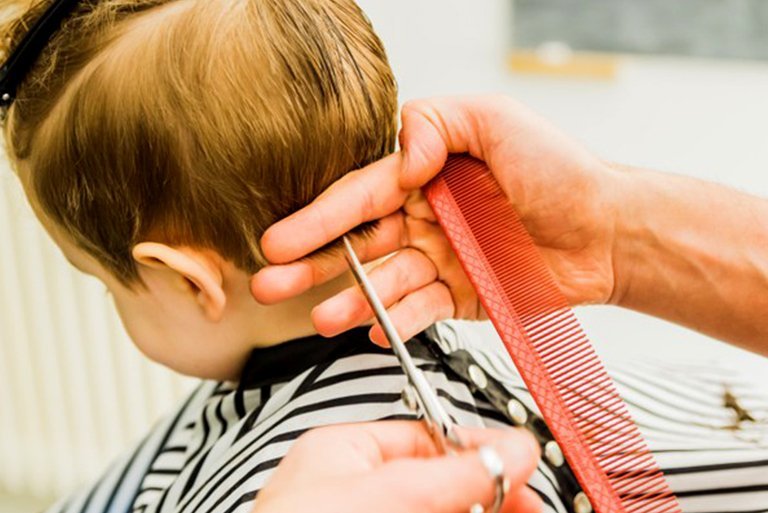For a child with sensory issues, a trip to the salon (something that so many of us take for granted) can be a daunting and frightening task. Such individuals often have difficulty tuning out background noise in a busy salon. For example, what sounds like a normal blow dryer to you and I, can sound lie fireworks or an alarm to someone with sensory sensitivity. Loud music, bright lights, and too much talking can be a nightmare. A negative salon experience can forever be etched into a child’s memory. It’s not worth a puddle of tears on the floor next to a pile of hair.
As a cosmetologist for over a decade, I was slightly embarrassed when I realized how little I knew about sensory issues; and how much I can do personally to help ease these stressful and potentially traumatizing salon visits. It’s unfortunate that this isn’t something they teach us in school, but I feel we should all know some of the very easy things we can do as stylists to make these visits easier for the client. Recently, I sat down with a fellow stylist and friend who I am fortunate enough to work alongside every day, who has a lot of experience in this area. Together, we compiled a list of tips for parents and stylists alike to help trips to the salon and haircuts in general less stressful for everyone involved.
- Visiting the salon before the actual appointment to familiarize the child with the environment of the salon.
- As the stylist, put aside more time than you would for a client without sensory sensitivity. Plan ahead and be prepared to take frequent breaks for the child to get up and walk around and maybe have some snacks.
- Allow the child to handle the clippers and other “safe” items associated with the haircutting process. Towels, combs, brushes and water bottles are great for this!
- Cleaning up the hairline and over the ears before starting the actual haircut might be best in certain situations. That way even if the child is having trouble and can’t handle the rest of the cut, they are a little more cleaned up than when they came in.
- Make sure the child is wearing a cape or a towel. Itchy hair falling into places can case sensory issues to escalate (and quickly). Offer a hand towel to the client to cover their face with. These small, sharp hairs might mean nothing to you, but everything to them.
- Have soft, flexible, earplugs on hand. This is great for alleviating the sensitivity to the buzzers and the repetitive snap of the scissors.
- Really focus on the task at hand. Cut quickly and efficiently, but don’t rush.
- Explain each step of the cut as it is happening. Trust is a must here. Do not attempt to do more than you voiced you were going to do. Ask the child if it’s ok if you need to do more than you originally thought. *Keep in mind these clients are extremely literal, so be conscious of the words that you chose to use*
- Always thank them for letting you cut their hair. It makes them feel like they are/were still in control the whole time.
Some tips for parents that stylists have found to be effective over the years:
- Schedule a haircut when the child is least likely to experience sensory issues. Avoid scheduling after school, or when your child is ill or tired.
- Watching someone else get a haircut can be a great way for the child to see how the process goes. For example- a parent or a sibling.
- Surprise haircuts aren’t usually a good idea. Plan in advance and use a “haircut” sticker or symbol on the calendar.
- Positive reinforcements each step of the way throughout the cutting process can go a very long way.
- Rewards or bonuses also go a long way. It shows the child that although we must do unpleasant things sometimes, it won’t last forever and they will be rewarded for trying their hardest.

